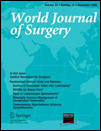Prognosis of Japanese Breast Cancer Based on Hormone Receptor and HER2 Expression Determined by Immunohistochemical Staining
Abstract
Background
We classified Japanese breast cancer patients based on estrogen receptor (ER), progesterone receptor (PR), and HER2 protein expression and compared their prognoses.
Methods
We compared the background and prognostic factors of 600 patients with breast cancer who were assigned to the following groups: luminal A (ER + and/or PR + and HER2-; n = 431; 71.8%), luminal B (ER + and/or PR + and HER2 + ; n = 27; 4.5%), HER2 (ER-, PR-, and HER2 + ; n = 39; 6.5%) and basal-like (BBC; ER-, PR-, and HER2-; n = 103; 17.2%).
Results
Background factors did not significantly differ among the groups. Disease-free survival rates were significantly lower for the luminal B, HER2, and BBC subtypes than for the luminal A subtype. Cancer tended to recur earlier and overall survival was significantly lower for the BBC than for the luminal A and HER2 subtypes. Overall survival rates for the luminal B, HER2, and luminal A subtypes were comparable.
Conclusions
The subtype distribution for Japanese and Caucasian patients was comparable. The prognosis for the BBC subtype was poorest among all subtypes. Breast cancer tended to recur earlier for the luminal B and HER2 subtypes than for the luminal A subtype; however, overall survival did not significantly differ among them.




